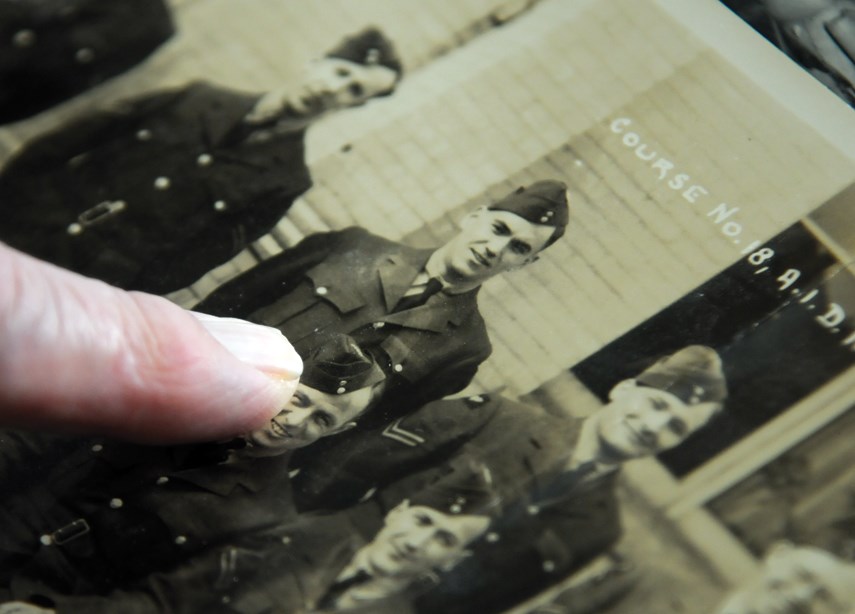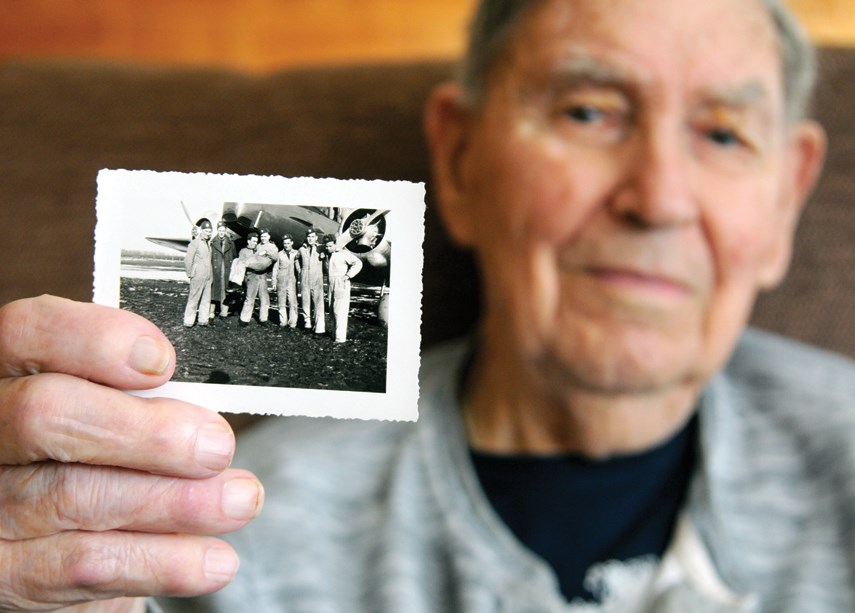As a young man in the summer of 1939, Jim Thomson remembers a friend predicting a war was imminent. On Sept. 1, the foretelling proved true when word arrived that Germany had invaded Poland and declarations of war were sure to follow.
It wasn’t a question of whether Thomson would serve but rather, how.
“It was easy to get involved in the war. There is a thing called conscription. On your 21st birthday, there was a knock on the door and a man said ‘Come with me,’” the 97-year-old West Vancouver resident said.
His father, a North Vancouver lawyer, was a veteran of the First World War and the only one in his class to survive. On his advice, Thomson didn’t wait to be drafted. In 1943, he signed up for the Royal Canadian Air Force. They offered him a position as a part of a flight crew but, knowing the sky-high casualty rate for airmen, he politely sought a role where he could put his skilled hands to use as an engine mechanic.
After his training, he landed in the air force’s aeronautical inspection division. At the time, it was considered “a real plum, but out of reach at the end of a very long branch,” he wrote in his memoir.
“I was the top of my class,” he recalls.
For the remainder of the war, Thomson was assigned to a Boeing factory on Terminal Avenue in Vancouver, where they produced the tailplanes for Avro Anson bombers and de Havilland Mosquito fighter-bombers. Unlike most planes at the time, their airframes were built largely of wood. Thomson’s job was to ensure nothing left the factory that wasn’t suitable for service.
“As fast as we could make them, a boxcar would come in at night, load up with the tailplanes, and away they’d go. The next day we’d make a few more. ... The air force had to inspect it to accept it,” he said. “It seemed like an easy job, but it was a fair bit of responsibility to make sure everything was as it should be in the contract.”
Thomson said he felt a tremendous amount of luck being assigned a dream job so close to home while so many others weren’t able to return home at all.
“I’m a woodworker at heart. This was heaven,” he said. “Everybody that was physically able was drafted or volunteered. … I think in my class, about half of us didn’t make it.”
One of his close friends was drafted among a group of 60. He became a RCAF tail gunner, one of only two who survived. Another friend wound up patrolling the Atlantic aboard a Royal Canadian Navy Corvette. They ran out of fuel and food adrift near the Azores Islands, surrounded by enemy submarines, Thomson’s memoir notes.
Meanwhile, Thomson had the tremendous fortune of being able to ski on Grouse Mountain and swim in the Seymour River.
“For me it was a transition from childhood innocence, you might say,” he said.
The AID played an important part in the supply chain, said Jerry Vernon, president of the Vancouver chapter of the Canadian Aviation Historical Society.
“It started out as a little detachment of half a dozen men. But during the war, it had men all over the place. ... They were responsible for inspection, testing and acceptance for the RCAF of all sorts of material. It wasn’t just airplanes,” Vernon said, noting with so many seaplanes being produced, the air force needed hundreds of boats as well. “I would think they might have been a couple hundred people by the end of war.”
The war ended in 1945 but Thomson’s love of working with wood didn’t. He spent 35 years teaching wood shop at West Vancouver Secondary and almost everything in eyeshot of his easy chair at home, he crafted himself.
Though he is an RCAF veteran, Thomson said he’s never been one to attend Remembrance Day ceremonies. The association of contributing to the war effort, as he did, with patriotism didn’t come until much later, he recalls. To him, the war years were a time of unquestioning service on the home front, something everyone did with little complaint.
“I was doing what I had to do. People were happy doing what they were doing. The people that were working there were happy. The people that were in the service were happy,” he said. “To stand up there saying ‘Hey, I’m a Canadian. I’m proud,’ waving the flag – that wasn’t in the books at that time.”




